REVIEW: Shadow of the Ninja - Reborn is both engaging and challenging
A remaster with real ambition and teeth
Experience colors every aspect of any art-form. For every attempt at something, there’s almost always hundreds of failures whether they be microscopic or massive, and they all build up to the final product: a culmination of all of the lessons learned. I have to highlight that word, “experience.” It’s the word I think of most when I think of Shadow of the Ninja: Reborn. It embodies every pore of this game and every facet of its design, and it’s what gives Shadow of the Ninja: Reborn it’s absolutely striking identity in a sea of very strong 2D platformers.
Where most remakes in the modern era see their credits shared amidst a sea of new faces and original development members, Tengo Project consists of the core original development team of these titles. To speak in language that fits the relevance of this statement, video gaming as a medium is very young and this team has been there since its earlier days. Remakes like this are not often spearheaded by the very people that crafted the original title decades ago, let alone green-lit. Is this enough to make Shadow of the Ninja: Reborn not just memorable, but a quality experience too?
Right from the jump when you boot up the game and get into the first stage, you’re met with something you’ll be acutely aware of for the entire ride: this game is absolutely gorgeous. I don’t think it would be a stretch to call this game cutting-edge in terms of modern day pixel artistry, as it’s just stunning. All of Tengo Project’s remakes have had stellar visual direction akin to this, but I don’t think they’ve ever hit the heights this game’s visuals do, and it doesn’t just look good in still images either! Every character and set-piece on the screen is animated fantastically, every frame is chosen deliberately and gives every movement and action the appropriate weight and feeling. Bosses in particular range from amazing to just stunning; the Stage 3 boss specifically is a collection of material worthy of any pixel enthusiast’s eye.
Of course you have to actually move and jump; this is a platformer after all! For anyone who’s played the original Shadow of the Ninja, whether they owned it previously on NES or gave it a go on the Nintendo Switch Online’s NES library, it’s going to feel completely different this go-around. Where other Tengo Project games leveraged familiarity and felt similar to the titles they were updating, Shadow of the Ninja: Reborn stays true to its namesake in the title: but it’s like a totally different game. Movement is far more weighted and less snappy, owing both to the animation frames of the characters and the speed of the actions themselves. Every action has a bit of a wind-up, including things like your basic jump, and every type of attack you use has an attached commitment that you can’t cancel out of. Even your inventory and health recovery items have this quirk. With inventory management, everything is handled in real-time, requiring you to stop and scroll through manually to use the item itself. This shifts the feel from something like Ninja Gaiden or any of those fast-flowing NES platformers into something far more methodical, but it’s a very welcome change of pace that grew on me in time, especially in terms of combat.
Your two basic attacks are the sword and the chain, both upgradable through power-ups within the stages. The sword is fairly self-explanatory—it’s fast, has decent reach, and shoots projectiles that do additional damage with upgrades. It’s handy for close encounters, and has the added benefit of cancelling out most enemy projectiles when timed correctly. The chain is where things get really interesting: it’s a diverse weapon that can be aimed in five directions (eight if you’re in the air), it’ll stall you in the air on usage, and most importantly it locks you into a very long animation to offset its extended reach and ability to be aimed. These two weapons NEVER overstep each other’s boundaries thanks to the very careful and intentional design, and they even emphasize things I very rarely see highlighted in platformers like this. The chain can actually hit multiple times if you don’t connect at the very tip, and this is critical for easily dispatching enemies from afar. The sword also relies on your understanding of its effective range, as you want to aim for the most damage with both its projectiles and the blade itself while not being TOO close to putting yourself into harm’s way.
This dichotomy of how the primary weapons work is what makes most of the level design really click in Shadow of the Ninja: Reborn. Making trick shots with the chain at just the right spacing to safely pick off enemies from afar while being mindful of the big recovery time, angling the chain through semi-solid floors to surprise foes, finding the right times to get up close and deal massive damage with the upgraded sword…it all blends together really well with the deliberate movement to make the game’s levels extremely compelling when they’re at their best. Enemy design is top-notch and intuitive too. Small fries are about as fragile as they look, and no enemy has a hugely misleading amount of health relative to their function and size. Even the finer things in the game are polished to perfection: you can’t harm enemies through most solid walls and they can’t hit you, so their AI simply won’t attack. It’s on full display in Stage 2 where many of the cramped hallways and wall corridors can be difficult at first, but also give you downtime to sort through your items, catch your breath and plan ahead. It’s great stuff.
It’s a testament to how well these base mechanics work on their own that Tengo Project also included a huge arsenal of tricks on top of these that keep the game fresh. All of the different weapons you can find have pretty simple applications, but they’re fun all the same. Sometimes it’s a big club that does a lot of damage, other times you get a rolling weapon of death that has to be aimed carefully, but makes quick work of all enemies in its path along the ground. Even the guns, as slow as they are, have some use cases as they fire the only fullscreen projectiles you have beyond the shuriken, and the spread on the fire is very handy. Topping these off are the extra movement tools you have access to, the hover and all of the wall running and climbing. These make Shadow of the Ninja: Reborn feel really robust in its gameplay systems once you finally come to grips with how it feels.
Tying the bow on all of this is the wonderful music and sound design. This is also a standard in these Tengo Project titles, and Shadow of the Ninja: Reborn absolutely delivers here as well. All of the remixes sound fantastic, and all of the in-game sounds are perfect and punchy, harkening back to an era of memorable sound design that mostly consists of grunting from in-staff audio recording booths and very crunchy compressed sound samples birthed by a generation of arcade game addicts. It’s such an appropriate testament to Tengo Project’s achievement with this game as a whole: a perfect marriage of old design ideologies mixed with a lot of modern action game sensibilities and design trends, made to ensnare the people who really yearn for an arcade-like challenge while also trying to encourage those who never really dipped their toe into these waters to give it a go.
That said, this game is certainly demanding. The controls feel very weighted and deliberate, yes, but the way Tengo Project achieved this might turn a lot of people off. I mentioned the jump wind-up earlier, but it really is significant, and the real time inventory management has a bit of a wrinkle too. You have to hold down a button and cycle through with a directional input, but left and right are inverted so to speak, which makes it somewhat hard to read in the moment. The hover, wall-run and ledge hanging are all responsive to input, but the actual control scheme of these actions is really poorly conveyed in the manual and doesn’t always feel the greatest. You certainly can’t jump into this game expecting the controls to be completely intuitive, and it feels really weird when about 80% of them work as you’d expect, but the remaining 20% just feel strange.
Control rebinding is also an issue. You can rebind key buttons just fine, but there’s no type of turbo buttons provided, and if you’re playing this on Switch you really have no way around this beyond a built-in controller turbo function. This is particularly painful if you find commands that involve button-mashing to be taxing, as the hover and wall-run are both reliant on this. While they don’t expect you to hand cramp your thumb into submission ala Mario Party, it’s certain that the ability to hold the button down instead of having to mash it would improve the intuitiveness and accessibility of these mechanics as a whole. The hanging controls are also just…strange. They work well enough when you’re used to them, but pressing the jump button to drop down while clinging and not simply pressing down to do so takes a lot of getting used to, and having no control over whether or not you hang on pipes and climbable surfaces is a bit cumbersome as well, as your character will simply cling to it automatically from your jump. There’s also a dash mechanic, and it does what it says on the tin, but it’s very hard to find uses for in common play scenarios due to its somewhat long animation and the inability to cancel both out of it and into it from anything.
The auto-scroller stages also put a bit of a damper on the best elements of the game. Stage 4’s isn’t too bad, albeit very confusing at first, and full of screen noise and all sorts of distractions, but Stage 6’s auto-scrolling section really takes the cake. After you do some of the most satisfying tests of how you’ve come to master the movement of the game and the element of timing, you’re slowed to a halt as you watch the screen crawl very slowly upward, with the only real challenge presented being that you have to know where you can progress forward and where the dead ends are. Add in the fact that there are enemies unseen that are going to throw at least one spear at you completely unprompted. and it makes the upward trip even more frustrating. This section feels particularly lesser in quality than the rest of the game and it’s a real shame, as all of the other levels are so wonderfully crafted.
The boss fights also suffer from this gradual degradation, which is a bit of a bummer. Stage 1’s boss is a welcome change of pace from the usual for these games, being reasonably challenging and forcing you to really pay attention. Stage 2’s boss is a wonderful escalation of this concept that embodies the best aspects of the level design: lots of breakable stuff and different ways to tackle it, and it’s just awesome and huge in scope. From Stage 3 up until the second phase of the final boss though? They just get simpler. It’s disappointing that Stage 4 and Stage 5 have added elements beyond the main boss itself that offer no extra type of player interactivity in the same way Stage 2’s boss fight did, and it just feels odd that the first phase of the final boss fight is substantially easier than Stage 1’s boss once you know the very basic pattern. Thankfully, the second phase is a really interesting test of how you’ve mastered the hanging controls and general movement alongside usage of the chain and the sword, so it’s not all bad news.
As for additional content and extra game modes, it’s the usual fare for Tengo Project. There’s two playable characters and sadly no extra unlockable ones this go around, and the two characters really only have minute differences between them. Hayate is slower on the ground but faster in the air, and Kaede is the opposite. While these differences are small in value, the movement and mechanics of the game have such a level of granularity to them, which means you really do notice how much these character differences add up. I ended up going with Hayate for most of my time with the game thanks to his higher air speed letting me utilize the hover and jumping in general more frequently. Unfortunately there’s no difficulty setting beyond the Hard difficulty, and there’s also no type of practice mode to train your skills on individual screens to help improve your times that way, or even a full game time attack mode. Considering items and inventory are carried across stages in a full game run, this feels like such a big missed opportunity on both fronts, as Shadow of the Ninja: Reborn has such a high potential skill ceiling. I’d love to see what players could do with this game given the tools to really perfect the craft.
Overall, Shadow of the Ninja: Reborn is incredible. I must stress that I really did not like this game at all when I first played, and this is a substantial point that needs to be made. It’s punishing, it’s hard, and it boasts more of what I’d call a learning incline than a learning curve, really forcing you to come to grips with its rules and how it approaches platformer design rather than relying on your prior knowledge coming in. I’ve seen it compared to Ghosts n’ Goblins and Castlevania, but I honestly can’t do this beyond very surface level analysis points like having a directional whip. It really is its own beast, but once you learn it and master the controls? It’s so satisfying to play through and clear in one continue. The replay value is worth mentioning too, as it has pretty good in-game local co-op and the Prep Shop mechanic allows you to preload an inventory of items and gear for successive playthroughs. This gives the game a lot of potential for those curious enough to experiment with all of its items and gimmicks.
If you’re at all a fan of arcade-style games or punishing-but-fair platformers that really reward your time, this game’s absolutely worth every penny. You’ll be met with some of the most awe-inspiring pixel art you’ve ever seen, fantastic music and sound, and most of all, you’ll be playing a game that’s truly crafted with years of experience and foresight from people who have been in this industry long enough to witness its growth and evolution. I can’t think of a better way to spend my afternoon as a platformer enthusiast myself, so if this at all tickles your fancy, go ahead and pick it up on Switch. You won’t regret it if you give it a chance.
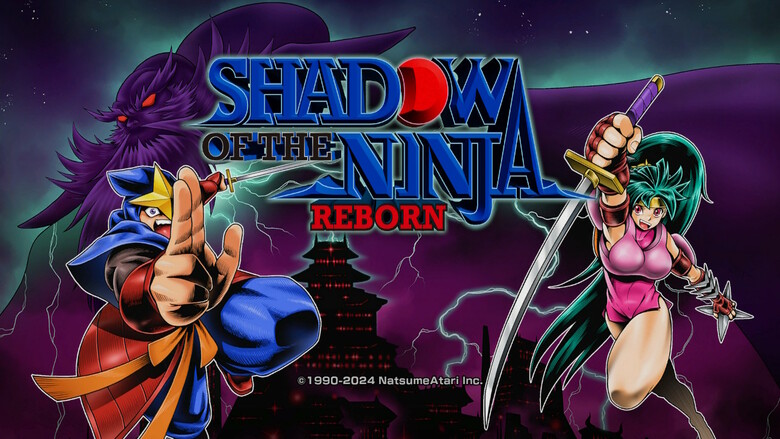


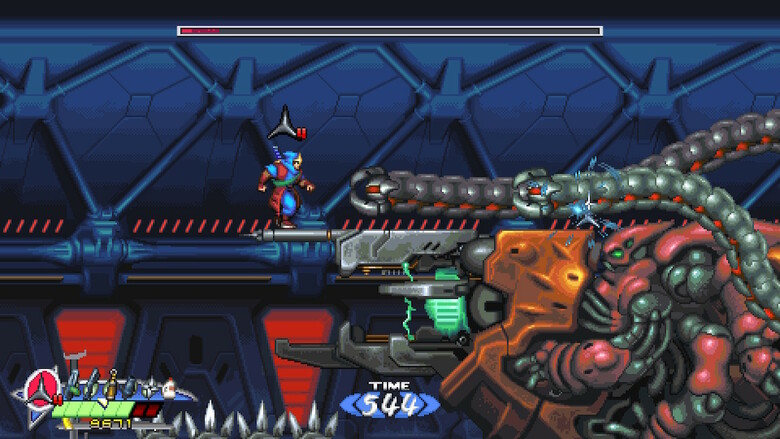
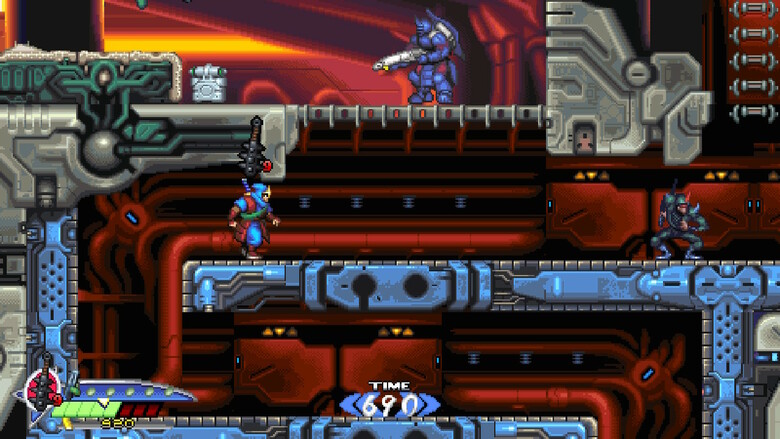
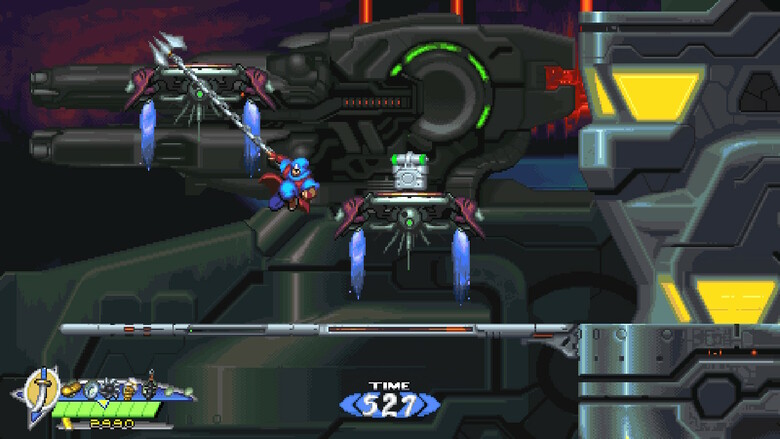
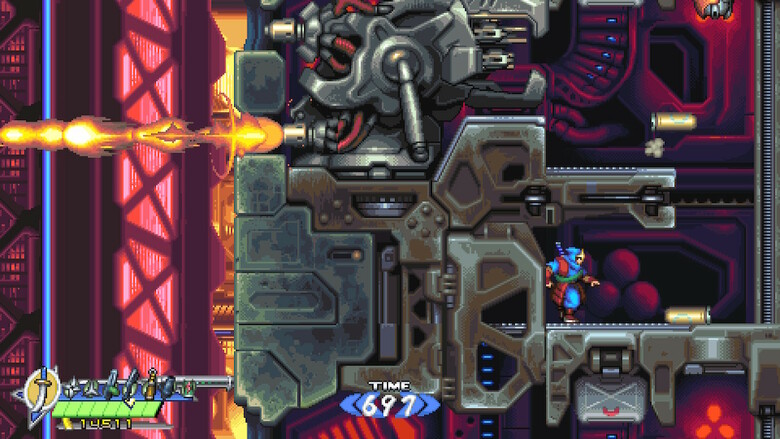
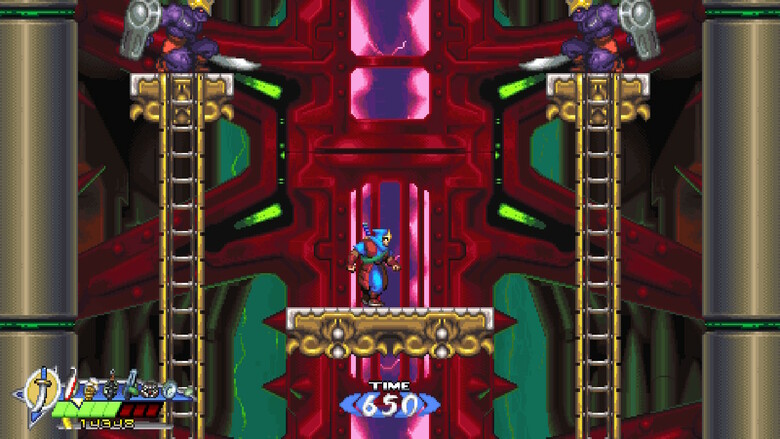
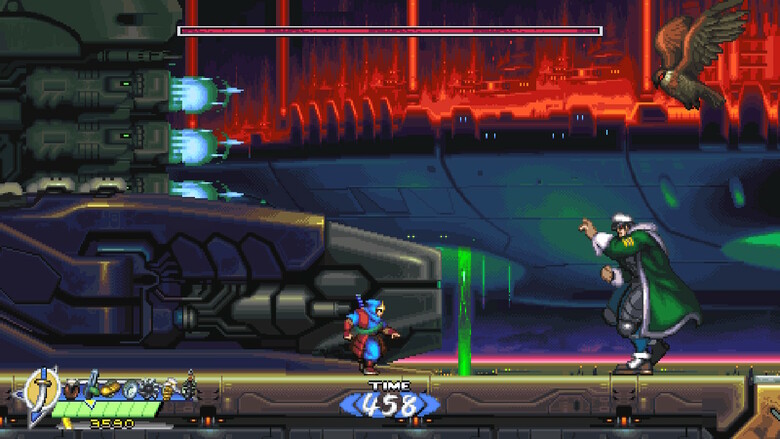
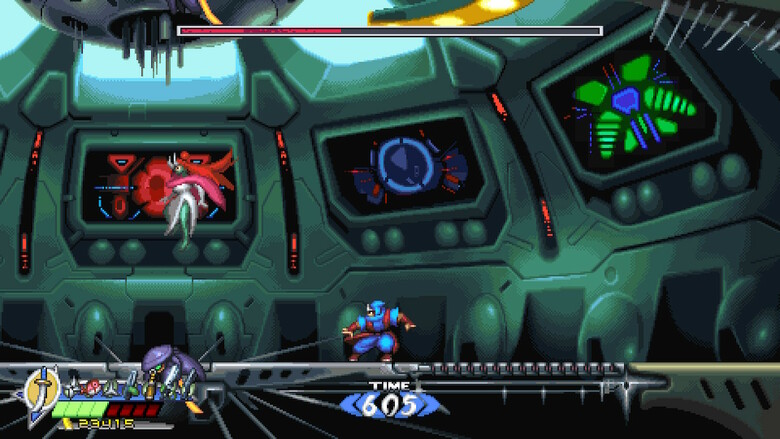
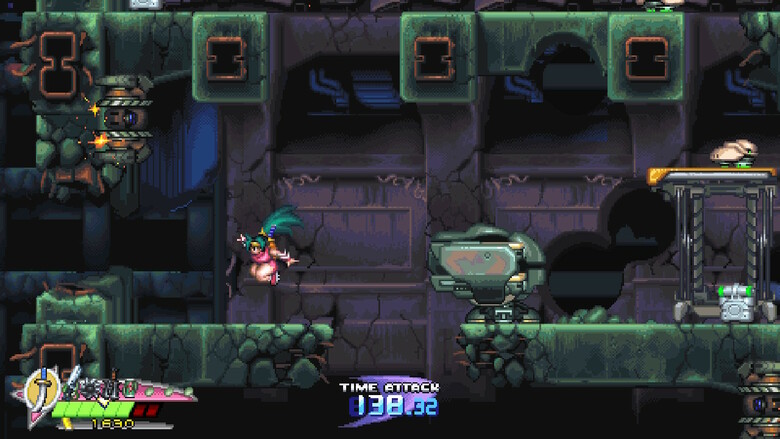
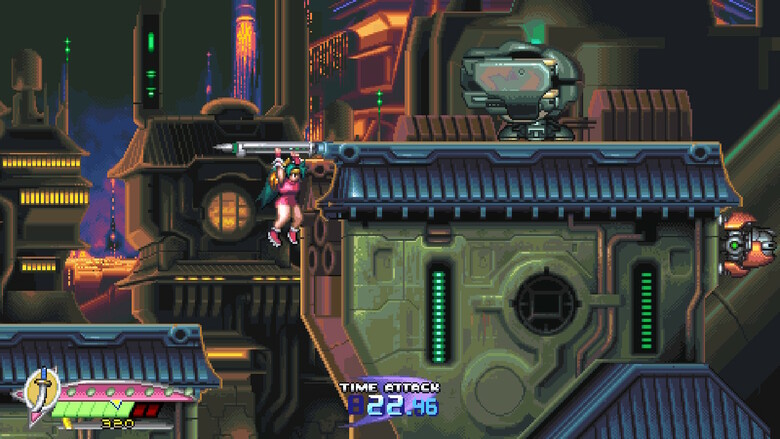
Comments (0)